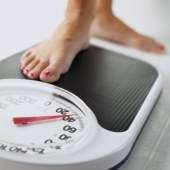Exercise up in US, but so is obesity: report

(HealthDay)—Although Americans are exercising more, the obesity epidemic continues to expand, University of Washington researchers report.
Their nine-year study of data from two U.S. health surveys suggests that physical activity alone is not enough to combat the problem.
"While physical activity has improved noticeably in most counties, obesity has also continued to rise in nearly all counties," said lead researcher Laura Dwyer-Lindgren, from the university's Institute for Health Metrics and Evaluation.
The obesity problem is directly related to how much Americans eat, said senior author Ali Mokdad, a professor of global health at the Institute for Health Metrics and Evaluation.
"Americans are not doing enough to control what they eat," he said. They still consume more energy than they burn off through exercise, he said.
According to the U.S. Centers for Disease Control and Prevention, more than one-third of U.S. adults are obese, and obesity contributes to serious chronic illnesses, high medical costs and premature death.
"We have to face the reality that obesity is affecting our health," Mokdad said. "We need to take care of ourselves by watching what we eat and how much we exercise."
From 2001 to 2009, the percentage of adults meeting recommendations for physical activity—150 minutes of moderate activity or 75 minutes of vigorous activity a week— increased in most counties in the United States, the researchers report July 10 in Population Health Metrics.
But the percentage of adults considered obese also increased significantly. "In some counties, this increase was greater than 15 percentage points," Dwyer-Lindgren said.
There was very little correlation between change in obesity and change in physical activity, the researchers noted.
Large disparities existed in 2011 between the best- and worst-performing counties. Less than 20 percent of men were obese in some counties, while nearly half were obese elsewhere, the report shows. For women, the gap was even larger—from less than 20 percent in some places to almost 60 percent in another.
Physical activity also bounced around, ranging from roughly one-third to about three-quarters, depending on county, for both men and women.
Big gains in physical activity were seen in counties in Kentucky, Georgia and Florida, but Kentucky's Lewis County also had the biggest increase in male obesity—from about 29 percent in 2001 to about 45 percent in 2009. Western states claimed some of the most active counties, with residents of Wyoming's Teton County the most active of all—with about 78 percent meeting recommended exercise guidelines.
Six of the eight least active counties were in Mississippi.
Increases in physical activity suggest that many communities have successfully adopted healthier lifestyles, likely through policies that promote physical activity, Dwyer-Lindgren said.
It is worth considering how these counties have so dramatically improved physical activity levels, Dwyer-Lindgren added. Work on the World Health Organization's Global Burden of Disease project suggests that 234,000 deaths could be averted through more physical activity, Dwyer-Lindgren said.
Samantha Heller, a senior clinical nutritionist at NYU Langone Medical Center in New York City, said it's not surprising exercise alone hasn't whittled down the nation's burgeoning obesity statistics.
"Healthy weight loss is achieved by eating a balanced, healthy diet, ongoing exercise and portion control," she said.
Not that exercise doesn't help. "Cardiovascular and resistance exercise keeps bones and muscles strong, boosts brain power, amps up energy levels, turns back the clock on physiological aging [and] reduces the risk of chronic diseases," she said. Physical activity also helps to alleviate anxiety, improve glucose control, manage weight and improve longevity, she noted.
"There is just no down side to exercise," Heller said.
The prevalence of overweight and obesity is in part generated by an environment replete with processed, fast and junk foods that are saturated with fat, sugar and sodium and marketed as cheap and convenient, she said.
Strides have been made to encourage eating fresh, whole foods, cooking at home and daily physical activity, Heller said. "But we need to do more," she added.
Dwyer-Lindgren's team used data on about 34,000 adults from the Behavioral Risk Factor Surveillance System, a state-based telephone survey that covers most counties in the United States, and the National Health and Nutrition Examination Survey.
More information: For more information on obesity, visit the U.S. National Library of Medicine.
Health News Copyright © 2013 HealthDay. All rights reserved.















